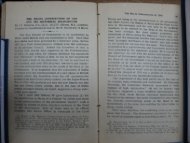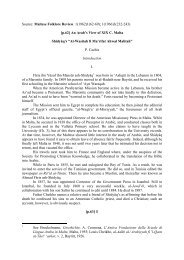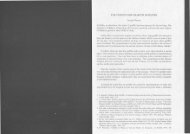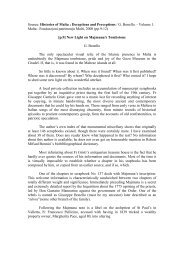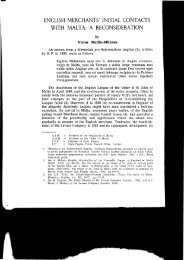essays on de soldanis
essays on de soldanis
essays on de soldanis
You also want an ePaper? Increase the reach of your titles
YUMPU automatically turns print PDFs into web optimized ePapers that Google loves.
ESSAYS ON DE SOLDANIS<br />
the name of the printer ‘Per Generoso Salom<strong>on</strong>i alla Piazza<br />
di S. Ignazio. C<strong>on</strong> licenza <strong>de</strong>’ Superiori’ with the additi<strong>on</strong><br />
of the words Si vend<strong>on</strong>o in Malta, while the other versi<strong>on</strong><br />
does not give the name of the printer but shows that it<br />
was <strong>on</strong> sale ‘Appresso Gregorio Roisecco Mercante Libraro in<br />
Piazza Nav<strong>on</strong>a’. In this latter versi<strong>on</strong>, which I have seen<br />
by courtesy of our Society’s Presi<strong>de</strong>nt Dr Albert Ganado,<br />
the name of Generoso Salom<strong>on</strong>i appears at page 65 <strong>on</strong> the<br />
title page of the sec<strong>on</strong>d part of the book, i.e. Nuova Scuola<br />
di Grammatica per agevolmente appren<strong>de</strong>re la lingua Punica-<br />
Maltese. 47<br />
De Soldanis’ work <strong>on</strong> the Maltese language echoes these<br />
two pet i<strong>de</strong>as – (i) that Maltese <strong>de</strong>rives directly from the<br />
original Punic Language, and (ii) that it may be of help to the<br />
study of the Etruscan language. De Soldanis’ theories, quite<br />
untenable in our time, have earned severe strictures from<br />
various scholars. The late Prof. P. P. Sayd<strong>on</strong>, for example,<br />
<strong>de</strong>scribed <strong>de</strong> Soldanis’ grammar as an ‘unsuccessful<br />
attempt at reducing the Maltese language to grammatical<br />
rules.’ 48 His statement that ‘the words punico-maltese reflect<br />
the opini<strong>on</strong> of the author’s times, an opini<strong>on</strong> to which n<strong>on</strong>e<br />
of the Maltese scholars of today gives his support’ may<br />
equally apply to the other noti<strong>on</strong> that Maltese may bear<br />
some relati<strong>on</strong> to the Etruscan language.<br />
This notwithstanding, <strong>on</strong>e cannot ignore the positive<br />
results of this work in which he proposed and actually used<br />
Latin characters for writing Maltese. In Less<strong>on</strong> XX, § V, of<br />
his unpublished revised grammar he stated: ‘Un alfabeto <strong>de</strong>lla<br />
lingua c<strong>on</strong> lettere latine, per poterla e scrivere e leggere venne da me<br />
formato al 1750, col parere <strong>de</strong>’ periti Lettori <strong>de</strong>lla Sapienza di Roma<br />
47 A. Ganado, ‘Bibliographical Notes <strong>on</strong> Melitensia – 1’, Melita Historica<br />
xiii, no. 4 (2003), pp. 365-68.<br />
48 P. P. Sayd<strong>on</strong>, ‘Bibliographical Aids to the Study of Maltese’, Journal of<br />
Near Eastern Studies 12 (1953), 26.<br />
24



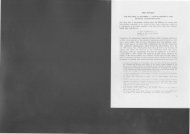




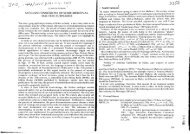
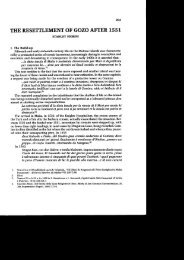
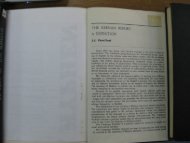

![Source: The Sunday Times [Malta]](https://img.yumpu.com/35239166/1/184x260/source-the-sunday-times-malta.jpg?quality=85)
